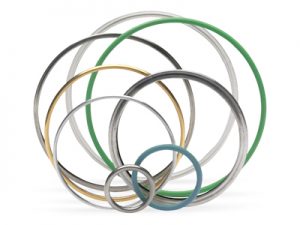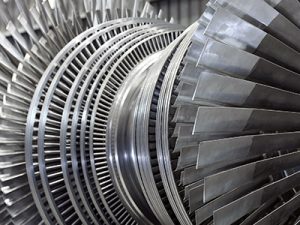Article re-posted with permission from Parker Hannifin Sealing & Shielding Team.
Original content can be found on Parker’s Website and was written by Thorsten Kleinert, Business Unit Manager, Composite Sealing Systems Engineered Materials Group, Europe.
When classic sealing materials reach their limits, such as temperature ranges above 300°C and below -50°C – alternative materials are sometimes required, such as metal seals with appropriate coating/plating.

Metal Seal Types and Sizes
The most important manufacturing technologies used to produce metal seals from stainless steel or nickel alloys are rolling, forming, CNC machining, welding, heat treatment, and coating/plating. In its more than 60-year history of producing metal seals, Parker has continually tackled the challenge of manufacturing increasingly large metal seals. Currently, spring-energized C-rings with a diameter of up to 7.6 m can be produced for which special forming machines and patented welding techniques were developed. They are supported by optimized special heat treatment and electroplating processes that make it possible to manufacture high-quality products even in such large dimensions. Additionally, Parker offers non-rotationally symmetric metal seals. These E-, O- and C-seals can be produced in lengths of up to 2.3 m on machines specifically developed for this purpose.
Products
- C-seals: ≤ 3,000 mm (118 inches)
- Spring-energized C-seals: ≤ 7,600 mm (299 inches)
- O-rings: ≤ 1,200 mm (47 inches)
- E-seals:
- Heat-treated ≤ 2,700 mm (106 inches)
- Segmented ≤ 7,600 mm (299 inches)
Materials and Coatings

The choice of plating is primarily focused on wear protection, corrosion resistance and improvement of the sealing properties. For this purpose, the surface properties of the metal seal are modified and a formable external surface layer with adjusted hardness is created.
For more information about sealing large-size applications with high temperatures, contact Gallagher's engineering department.
Gallagher is an authorized distributor for Parker products.
